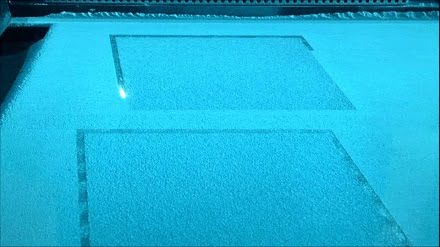Additive manufacturing (AM) researchers at the University of Pittsburgh's Swanson School of Engineering and simulation software company Ansys Inc. are among 13 university-led proposals to capture an Early Stage Innovations (ESI) grant from NASA's Space Technology Research Grants Program.

A laser interacts with Inconel powder inside the EOS DMLS M290 at the Swanson School's ANSYS Additive Manufacturing Research Lab. Courtesy of Albert To/Swanson School of Engineering.
ESI grants promote innovative, early stage technologies that address high priority needs of America's space program. The Pitt team's award is worth $500,000 over the course of three years.
"Additive manufacturing now allows us to produce complex metal components that are strong enough to replace machined parts in mechanical applications,” said Albert To, associate professor of mechanical engineering and materials science and director of the Ansys Additive Manufacturing Research Laboratory. “However, because of the process parameters and materials used in AM, the microstructure within a part or between different parts can vary widely. Thanks to NASA, our research will focus on developing a new simulation tool to predict the microstructure evolution and stability of Inconel 718, a common nickel superalloy used in laser-based AM in industry."

The research team's proposal noted that NASA is keenly interested in improving the performance of structural components for high-temperature applications such as jet engine parts, where both creep and strength are critical and need to be anticipated.
"Currently, the only way to certify an AM part for space missions is to perform extensive microstructure and property characterization experiments on it, which is both time-consuming and expensive," said co-investigator David Conover, chief technologist for mechanical products at Ansys. "The outcome of this research will potentially enable simulation-based certification of both AM parts and substantially lower the expense of certification."
The goal of the Space Technology Research Grants program is to accelerate the development of space technologies in their earliest stages to enable future systems capabilities and missions for NASA, other government agencies and the commercial space sector. The program is funded by NASA's Space Technology Mission Directorate, which is responsible for developing the cross-cutting, pioneering, new technologies and capabilities needed by the agency to achieve its current and future missions.
"NASA's Early Stage Innovations grants provide U.S. universities the opportunity to conduct research and technology development to advance NASA's scientific discovery and exploration goals," said Steve Jurczyk, associate administrator for NASA's Space Technology Mission Directorate. "Partnering with academia in advancing these critical areas of research ensures we are engaging the best and brightest minds in enabling the agency's future robotic and human space flight missions."